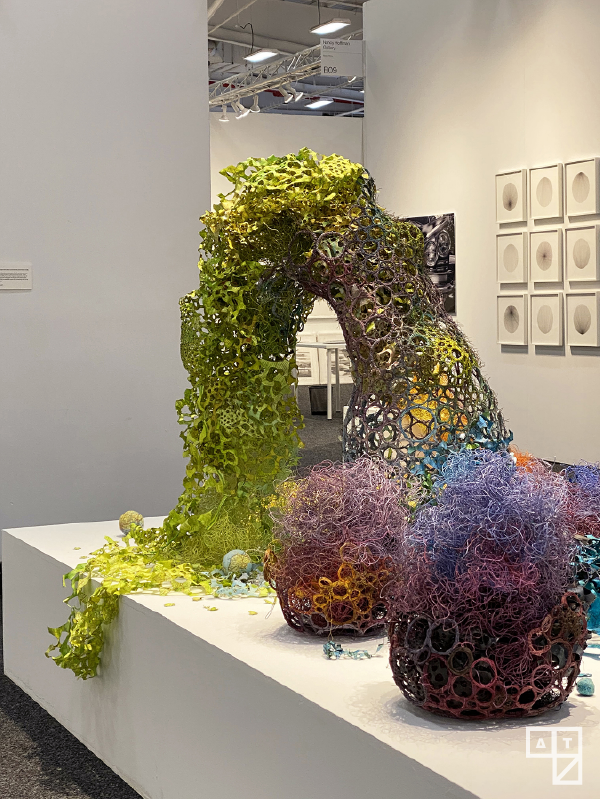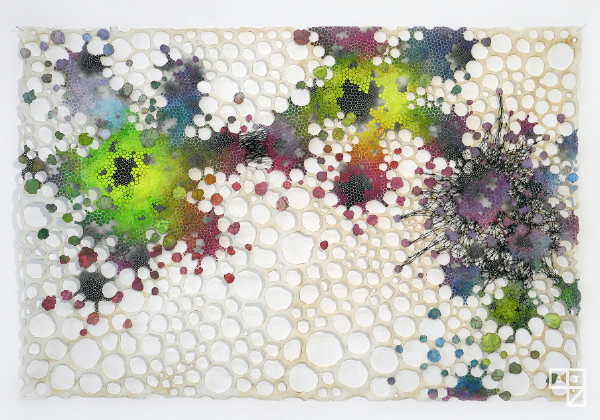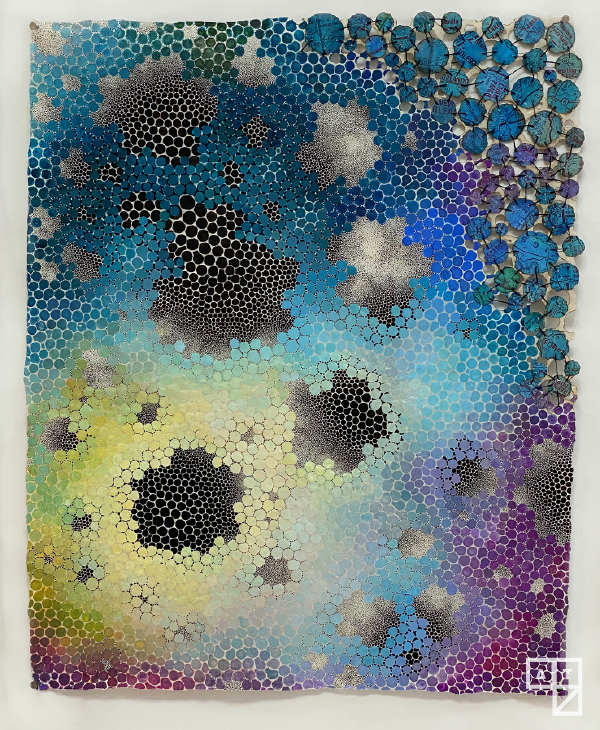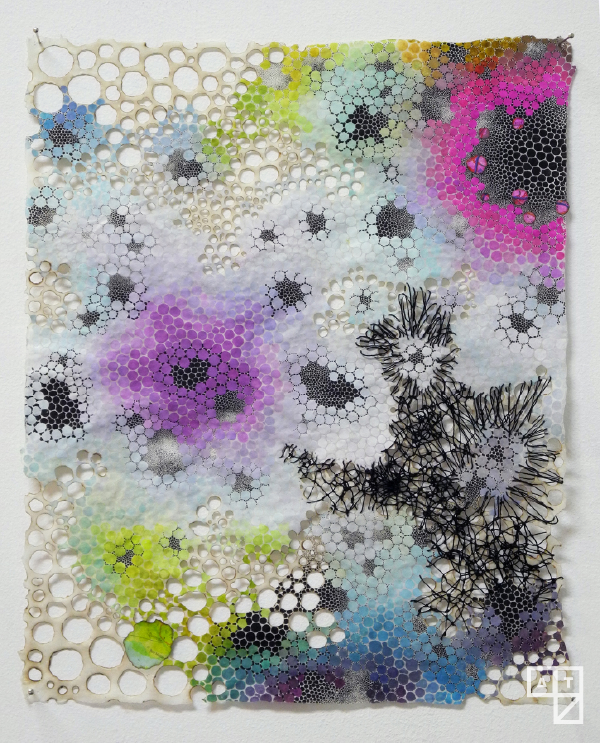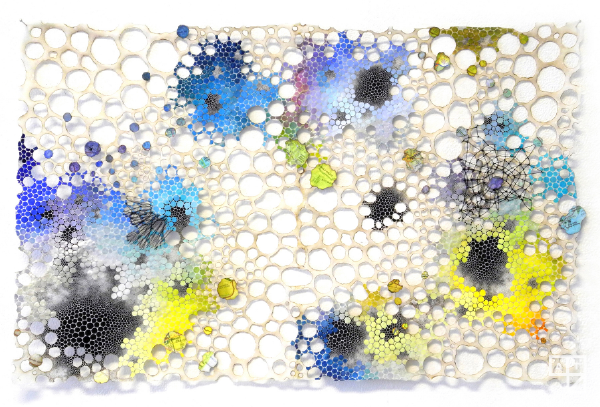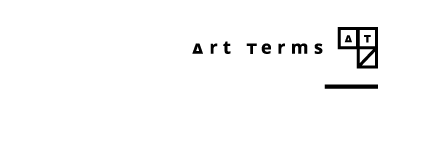April 7, 2021
Detail of Scorched.
Thank you for taking the time for the interview. Could you introduce yourself to Art Terms Magazine readers?
Thank you for your interest in my work. I live and work in New York City. My art practice emanates from within, somewhere between meditation and psychoanalysis. I am deeply private, yet compelled to share intimate feelings and use this dichotomy as the basis of my work by developing an encrypted language of color and symbols to articulate my interior monologues.
Your artworks are very unique and fascinating. Could you explain the process of your work?
I begin each composition by burning holes into handmade paper to create a sense of both ephemerality and substance. Allowing forms to emerge from within the burnt lattice structure, I scribble notes from my journals directly onto the forms. Then, referring to a Flow Chart I devised, which assigns a Pantone reproducible color to every emotion, I translate my feelings into colored dots onto the compositions as a means of plotting out the changing landscape of my emotions. I have introduced thread into my work; at first to mend rips and tears in the composition, and subsequently the threading has evolved into planes of color that expand my narrative.
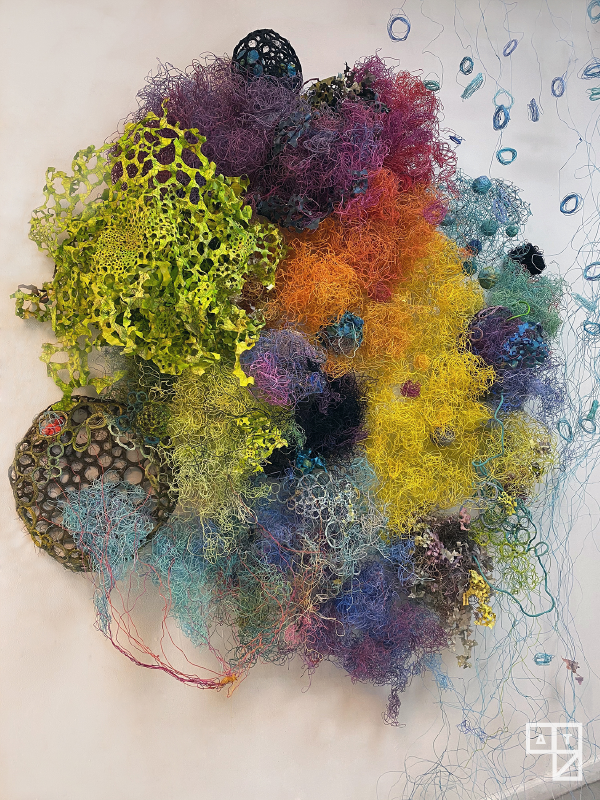
Juberous.
What does your work aim to say?
My work is a visual reflection of what is going on inside my head. I leave it up to the viewer to interpret.
Have you had a decisive moment to become an artist?
I always knew I was an artist since I was a little kid. It was never a decision to become an artist it was just my reality. My decision has always been whether I wanted to continue to create art in private for myself, or whether to be more public.
You majored in Psychology from Colorado State University. What makes you get interested in Psychology? And how did you come up with the idea of combining this with art?
I was introduced to my first concept of Psychology at an early age, watching a sci-fi movie, Forbidden Planet, about creatures from the Id who killed inhabitants of the planet, Altair. Essentially, the murderous creatures of the Id were manifestations of the Commander’s rage. The idea of some sort of agent inside one’s head fascinated me. I needed to find out what an Id was and sought out answers, which I found in Psychology books at the library. The world of the internal opened up to me and it became my life’s study. My interest in Psychology brought me to Surrealism and Dadaism, which paved the way for me to use the mind in my own way in art. Even though I studied portraiture, I was working towards delving inward for years. When I took a course in microscopy as an adult, that pretty much was the bridge that brought me into painting internal worlds.
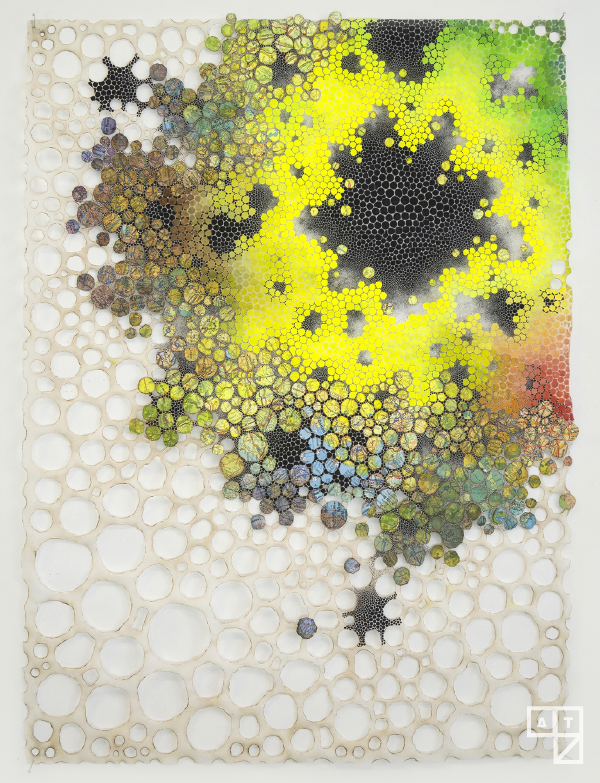
Pending. 2019, 24x18”, Watercolor, gouache, maps on Abaca paper
After receiving a BS in psychology, you kept studying neural psychology and art. It would not be easy to study both at the same time. Have you ever wanted to give up or had the hardest time?
My most incisive learning has been autodidactically, so I get to choose my focus, but my knowledge is not all-inclusive. As an artist I have the freedom to transgress beyond boundaries of psychology in art and do not have to defend my work as I would if I were in science or academia.
What is your source of inspiration?
I have no one source of inspiration. Inspiration comes from everywhere and it is nonspecific. I am obsessed with the mechanics and operations of both the living and inanimate objects. As a child, my father, a television repairman, took me with him on house calls. The tiny little components inside the television inspire my work to this day. I recently saw some slime molds and moss and facsimiles of their respective forms are working their way into my compositions.
Separation Anxiety. 2019, 24x36”, watercolor, gouache, thread, map fragments on Abaca paper
Who is your favorite artist and why?
I have no one favorite artist, but have been inspired by different artists at various times of my development. When I first saw Jackson Pollock’s work, I thought ‘oh yeah, brain waves’. I can look at Lee Bontecue’s work for eternity and the same with Gordon Matta Clark. Their work takes me to new spaces in my own thinking. I feel a strong relationship to Eva Hesse’s determination to go beyond what is known, and what could ever be known. Lastly, Lee Alexander McQueen’s fashion/art was so darkly beautiful; his work continually motivates me to push boundaries.
As the audience can see ‘loss and renewal and the circle may be open or closed’ in your work, you make a work that has ambivalence. In what sense are you working on this?
I work out my ambivalence through my art. Do I want to share my feelings or withhold? Is it the end, or just the beginning of something new? I feel loss, but is there regeneration within the loss? I try to remove emotional veils as much as I possibly can to see objective reality and use contradictions within my materials and the physicality of my work to emphasize the uncertainty we all dwell within.
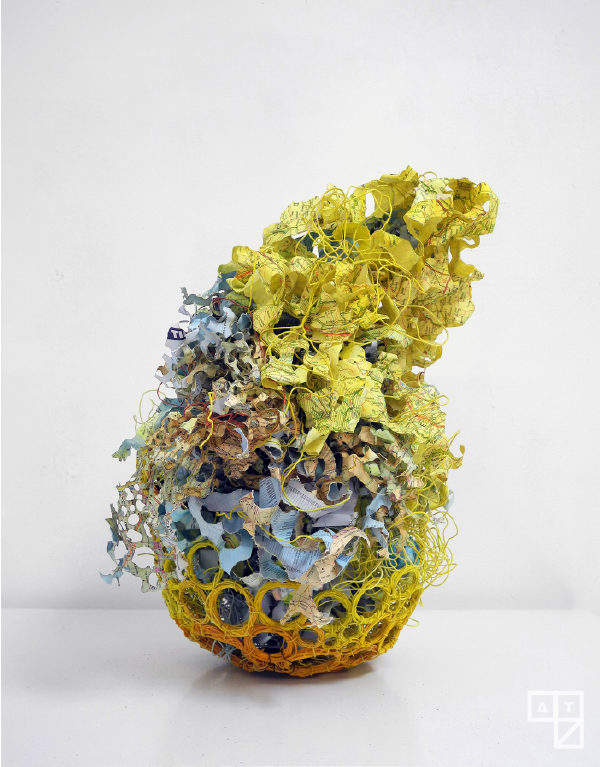
Paris. 2019, 9”, maps, wire, thread, watercolor, acrylic
The work on the map is impressive. What is the meaning of the map?
I use maps in my work to explore the changing landscape of our internal as well as the external worlds. Composed of vascular systems and arteries, maps act as proxies for our physical selves; they promise directions and personify our inner journeys, our hopes and fears and states of mind.
The reason why you use circles in your works is that the shape of a circle is a fundamental form for all creation. Then, is the pattern, which is the size of the circle and its position, under your plan, or is it a pattern that is made randomly?
The genesis of my work is the Enso, which is the Japanese term for circle and a sacred symbol in Zen Buddhism, embodying perfection and infinity. As the most basic component in existence and my primary means of communication, I reinterpret the circle in both positive and negative space as a shared language connecting physical to psychological and spiritual. Typically, I have a nascent concept of what I want from the composition, but when creating, it feels more like a collaboration between me and the work as the form emerges. The dots and holes conspire together in patterns somewhere between random and proposed.
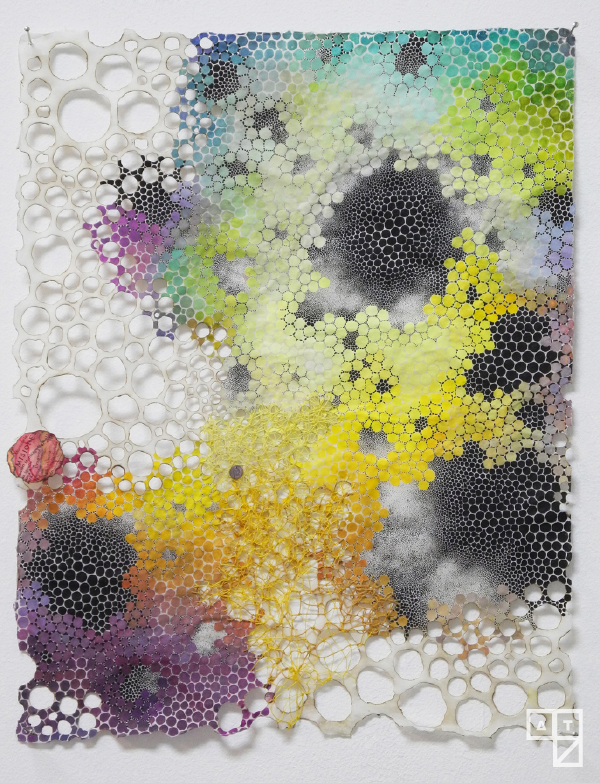
Esemplastic. 2020, 14x11”, Watercolor, gouache, thread, map fragments on Abaca paper
From flat work to three-dimensional work, you make various artworks. What is the biggest difference between the meaning of planar work and the meaning of three-dimensional work?
My two dimensional works are mappings, whereas I consider my three-dimensional works more in terms of architecture; comprised mainly of cotton-covered wire, they are ecosystems of the mind.
Since you use fire while creating artworks, you would have a lot of difficulties. What was the most difficult experience?
I exert extreme focus while burning so I do not catch fire.
About your works, you said "It is a sacred symbol in Zen Buddhism, embodying infinity and perfection." When did you get to know Zen Buddhism?
I first became aware of Buddhism in a Junior High School class. It occurred to me that Buddhism was more of a confirmation of my personal beliefs, than an introduction to something I never knew. I found out about Zen much later when I began looking for a personal practice. I like the simplicity and rigor of Zen.
Deluge.
What is the most important detail or point you consider the most (when creating artworks)?
It is important for my work to be authentic and rigorous, even if no one else knows.
Is there one particular artwork you’ve created that you’re most proud of or close to? Why’s that?
I think because each work takes so long to develop I end up falling in love with every one. Sometimes I begin a composition with disinterest, or even dislike, but since we are together a great deal of time, I get to know the work and appreciate its special attributes and understand its flaws and awkward parts. The work is always a part of me and I am always a little sad when I have to say goodbye, but that feeling of loss induces me to create new work to fill the hole.
Anacoluthia. 2020, 14x11”Watercolor, gouache, thread, map fragments on Abaca paper, Private collection, New York
What kind of artist do you want to be remembered as?
I don’t think I really care.
Is there a new genre or expression technique you want to try?
Yes, I plan on exploring metalworking and rug hooking.
Is there an artistic goal that you would ultimately reach through your work?
I think of being artist in the same way I think of life. It is a continual quest for exploration, understanding and growth. Yes, there are times when I am not learning or developing, but simply making works and feel peaceful and content to create my works on paper. I consider them maps in which to navigate future actions. But I am most excited, albeit many times frustrated, when I am experimenting. In that way, my artistic goal is to find something unexpected that alters my perception.
Enantiomer. 2017, 14x21", Watercolor, gouache, thread map fragments on Abaca
This is the last question. As an explorer who explores the ambiguous boundaries of physical and mental space, what do you think is the meaning of life?
For me, the meaning of my life is to attain knowledge and understanding. I continuously pursue the unattainable goal of enlightenment.
